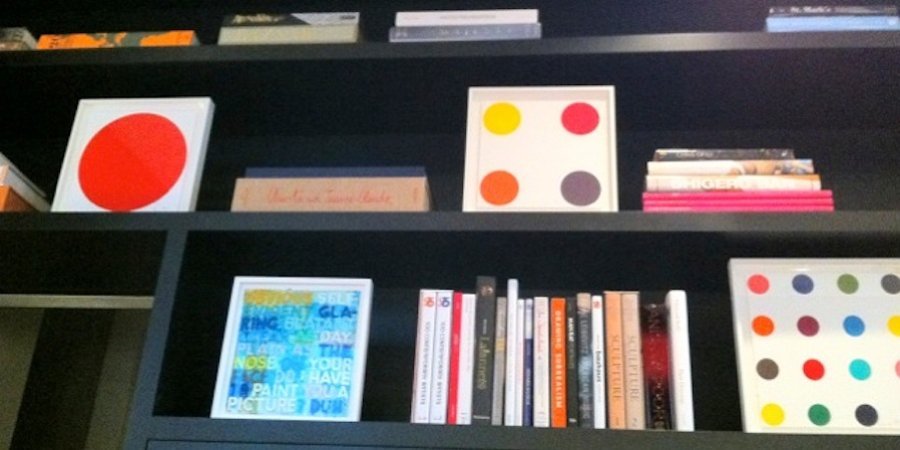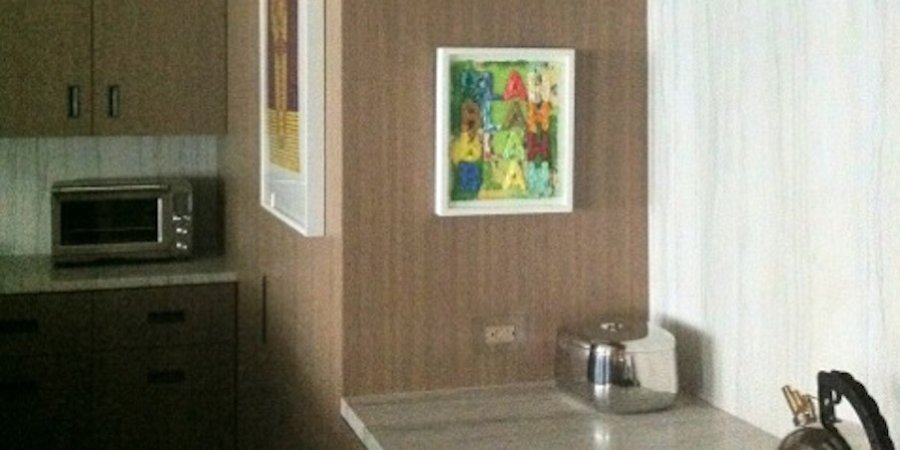In an early scene from Herb & Dorothy, the 2008 documentary about famed collectors Herb and Dorothy Vogel, the unassuming elderly couple gives a tour of their minuscule New York City apartment, which improbably holds hundreds if not thousands works of art. A wire piece by Richard Tuttle hangs over a closet; two Julian Schnabel pieces are stacked on top of each other on a small wall inlet. It's a memorable lesson that big collections sometimes come in small spaces—and that starting a collection doesn’t require endless bare walls. To find out how to most effectively display art in modest settings, we asked three art advisors to explain how to make the most out of a little.
TIP 1: Define the Objective.
“A question I ask my clients is: What is the purpose of this space?” art advisor Lydia Barry-Kutko says. “Do you you dine here? Entertain? Read? Or is this a transitional zone to get you from one place in your home to another?” A small space might lend itself to the contemplation of a single, subtle work, or provide a powerful stage for a louder one. “Some collectors love having their most quirky, difficult and conversation-inspiring work where they hang out with friends,” Barry-Kutko adds.
TIP 2: Look Outside the Box When It Comes to Galleries.
Chelsea may have become a hot zone for warehouse-sized art, but there's a wealth more diminutive works to be found at shows in galleries further afield. “I'm seeing many examples of solid, human-proportioned art right out of Bushwick studios,” says Barry-Kutko. In addition, a small space doesn’t necessarily mean that petite pieces are best for it. “I think the instinct is to buy a lot of small works, and that is not necessarily the best approach,” art advisor Megan Fox Kelly says. “A collection of small works hung together salon-style on a single wall can be wonderful. At the same time, a single large painting filling an entire wall can be can be an unexpected play on scale in a space.”
TIP 3: Play to a Work’s Strengths.
Some works require close observation to bloom and are in fact best suited for a smaller room or a hallway. Barry-Kutko once advised a client with "walls so close you could touch them," to place etchings there, taking advantage of the tight range. In an etching, "the tactile qualities of the impression that the plate makes on heavy cotton woven rags do have a way of bringing a viewer right inside the artist's process and intention." Kelly suggests prints, drawings, and sketches as small-scale, affordable insights into an artist's practice. "I helped put together a wonderful collection of prints and drawings by important postwar artists including Ellsworth Kelly, Robert Mangold,Ed Ruscha, Richard Serra, and Lichtenstein that filled the walls of a small residence. The simple, elegant, bold forms created a beautiful installation and a wonderful environment."
TIP 4: Manage the Finer Details.
Good framing and lighting doesn't require endless space. Kelly describes advising a client with a long, narrow hallway to place a group of contemporary drawings—which had gotten lost amid the rest of the collection—in that area. “We filled this hallway with her drawings collection, installed in long rows on both sides, and focused lighting along the walls, creating a beautiful little 'gallery' in her home," she says.
TIP 5: Don't Forget the Bookshelf.
For miniature works, a bookshelf can be a particularly elegant setting, points out art advisor Elisabeth Wingate. "To find places for art within a very small space, a client of mine removed some books from the bookcase, creating room for drawings by Alyson Shotz and Louise Bourgeois," she says. "In a small room with very high ceilings we used the bookcases to display a collection of tribal art, and in a small office we used the bookcases to display three prints by Damien Hirst and a Mel Bochner monoprint." Once you consider the bookshelf, further options open up. "I feel that any surface or wall can be used for art display," Wingate says. In the house of another collector, "the scale of a small Bochner monotype works perfectly on the wall adjacent to the stove."






























